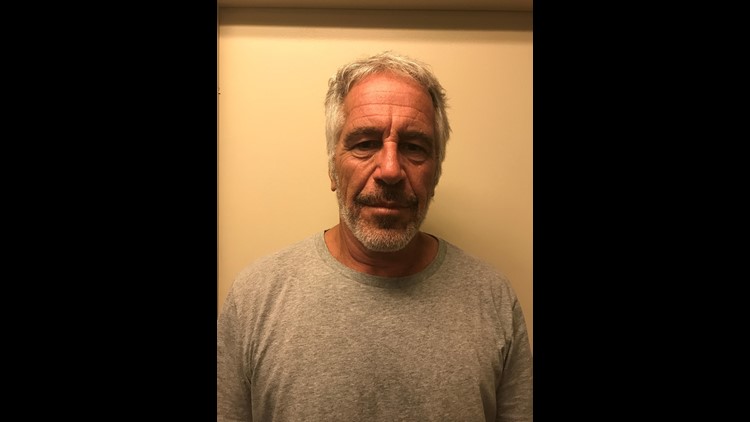A version of this article first appeared in the “Reliable Sources” newsletter. You can sign up for free right here.
In a story published Thursday morning, the Washington Post broke news that Jeffrey Epstein’s autopsy had found “multiple breaks in his neck bones.” WaPo played this revelation up, saying it is “deepening the mystery about the circumstances around his death.”
The Post’s story helped fuel conspiracy theories surrounding Epstein’s death, which authorities have called an apparent suicide. But, according to medical experts I spoke to Thursday, the evidence presented in WaPo’s story was actually consistent with suicidal hangings. Let’s walk through this…
The hyoid bone
At the heart of WaPo’s story was the revelation that among the broken bones in Epstein’s neck was the hyoid bone. As WaPo reported, such breaks are associated with “victims of homicide by strangulation.” That is true.
BUT, as WaPo also reported, “Such breaks can occur in those who hang themselves, particularly if they are older.” Epstein was 66.
And yet the story seemed to concentrate on the broken hyoid bone to paint a picture of possible foul play…
What Sanjay Gupta told me
To get a better understanding of this, I spoke on the phone with Sanjay Gupta, CNN’s chief medical correspondent. Gupta immediately noted that “once you get beyond 40 or 50” the hyoid bone “becomes much more brittle and easier to break.” Again, Epstein was 66.
But what Gupta found most interesting was that, in its totality, the autopsy results presented in WaPo’s story actually were more consistent with a suicidal hanging than a strangulation. Why? Because of the multiple broken neck bones.
“It actually suggests much more strongly that it was hanging versus strangulation,” Gupta explained. “You wouldn’t break those other bones during a strangulation.”
What other experts told me
I obviously wanted to check in with some other medical experts to get a second, third, and even fourth opinion. I spoke on the phone with Gerald Rodts, chief of spinal surgery at the Emory Clinic. He said, “The presence of other broken bones in his neck, from a guy 66 years old, is very consistent with suicidal hanging.” Rodts agreed that “classically with strangulation, you don’t see broken bones. It’s not common. That’s what really kind of goes against that theory.”
I also talked with Bill Lloyd, a surgeon board-certified in both ophthalmology and anatomic pathology, with training in forensic pathology. He cautioned against even looking at the hyoid bone, calling it “meaningless” and saying he was “not persuaded that [Epstein] didn’t hang himself.”
“Stay away from it,” Lloyd said. “It doesn’t indicate anything.” Lloyd added, “You can twist the hyoid bone theory to tell whatever story you want to tell. It just gives naysayers the ability to advance whatever conspiracy theories they want to tell.”
Finally, I chatted with Cyril Wecht, a high-profile forensic pathologist who had previously expressed some suspicion about Epstein’s death. But, he too explained, if the possibility of force during the hanging could be shown, “and if there are cervical vertebrae fractures, and a fractured hyoid bone, I would say that is more consistent with a hanging in that fashion than it would be a strangulation.”
WaPo’s own expert: Hyoid bone break “does not exclude suicidal hanging”
In the second paragraph of WaPo’s story, the newspaper cited “forensics experts.” Only one such expert was quoted in the piece: Jonathan Arden, president of the National Association of Medical Examiners. I couldn’t get in touch with Arden on Thursday, but he also expressed caution to WaPo.
“If, hypothetically, the hyoid bone is broken, that would generally raise questions about strangulation, but it is not definitive and does not exclude suicidal hanging,” Arden said in WaPo’s piece.
After this story was first published, Arden released a statement in which he said that, in addition to strangulation, “fractures of the hyoid bone” are “well recognized” to “occur in suicidal hangings.” Arden noted that such a fracture “is not a definitive finding that by itself determines that a death was a homicide, or by itself distinguishes a homicidal strangulation from a suicidal hanging.” He added that “any autopsy finding must be interpreted in the context of the totality of all the findings and the investigation into the circumstances of death.”
So again, why did WaPo seem to hype this, given that authorities have said the death was caused by apparent suicide?
“Incomplete data with incomplete information”
When I spoke with Gupta, I asked him for his thoughts on how WaPo presented the autopsy results they had obtained. “They use incomplete data with incomplete information to try and draw a conclusion about the cause of death and to suggest it was a strangulation,” Gupta said. “We can’t possibly know that with as little information as was presented.”
How it played in the fever swamps
While Gupta rightly noted that there are not enough details to make a conclusion, conspiracy theorists were more than happy to use WaPo’s story as evidence Epstein was murdered. InfoWars, for instance, declared that it was now “official” that Epstein “was murdered.” Other less-than-reliable sites and personalities behaved similarly…
WaPo’s response
I checked in with a WaPo spokesperson Thursday evening. I asked why only one forensic expert was quoted in the piece, when the story cited multiple experts in the second paragraph. I asked why other experts, like the ones I spoke with who said the evidence in its totality was more consistent with suicidal hanging than strangulation, were not quoted. And I asked how the evidence laid out in the piece served in “deepening questions around” Epstein’s death.
The spokesperson replied in an email saying the newspaper was “not ‘leaning into’ any theory,” adding that the story “makes absolutely clear from the beginning that suicide remains a distinct possibility.”
The spokesperson said that the story cited a study which “produced conflicting results about the likelihood of hyoid break in a suicide,” stressing though that the “experts we spoke to said that this break is more common in strangulation.”
The WaPo spokesperson concluded, “What we said throughout the piece is that this requires greater investigation.”



